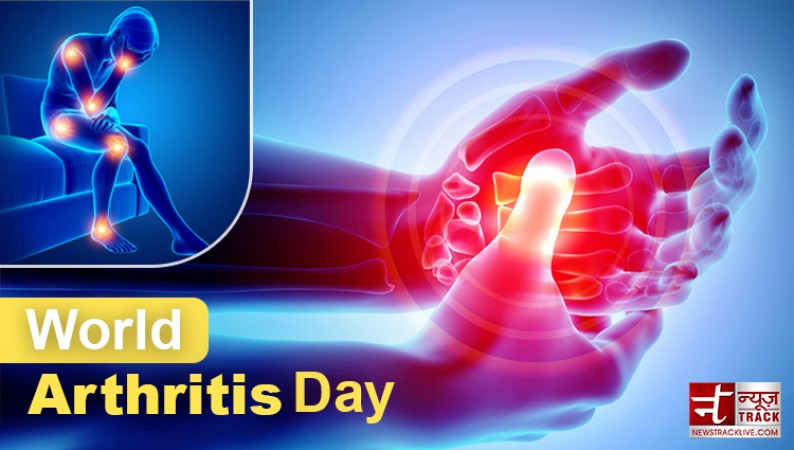
World Arthritis Day, observed on October 12th, serves as a critical reminder of the global impact of arthritis. Arthritis is not a single disease but a term that encompasses over 100 different types of joint-related conditions. These conditions affect millions of people worldwide, leading to pain, reduced mobility, and diminished quality of life. In this article, we will explore the various forms of arthritis, their common symptoms, causes, and most importantly, ways to prevent and manage this debilitating disease.
I. Types of Arthritis
Arthritis can be broadly categorized into two main types:
Osteoarthritis (OA): This is the most common form of arthritis, characterized by the gradual breakdown of the cartilage that cushions the ends of bones in joints. It typically affects the knees, hips, hands, and spine.
Rheumatoid Arthritis (RA): An autoimmune disorder, RA occurs when the immune system mistakenly attacks the synovium – the lining of the membranes that surround the joints. This leads to inflammation, pain, and joint damage.
Apart from OA and RA, there are several other types of arthritis, including gout, psoriatic arthritis, ankylosing spondylitis, and juvenile idiopathic arthritis, each with its unique characteristics.
II. Common Symptoms
Although the symptoms of arthritis can vary depending on the type, there are several common signs to watch out for:
Joint Pain: Persistent pain in one or more joints is a hallmark symptom of arthritis. It can range from mild to severe.
Stiffness: Arthritis can lead to morning stiffness and limited range of motion in the affected joints.
Swelling: Inflammatory forms of arthritis, such as RA, often result in swollen and tender joints.
Fatigue: Many arthritis patients experience overwhelming fatigue, which may be linked to chronic pain and inflammation.
Reduced Mobility: As the condition progresses, joint damage can lead to reduced mobility and deformities.
Warmth and Redness: Inflammatory arthritis can cause warmth and redness around affected joints.
III. Causes of Arthritis
Understanding the causes of arthritis is essential for effective prevention and management. While the exact causes of various types of arthritis remain elusive, several risk factors have been identified:
Age: The risk of osteoarthritis increases with age, as cartilage naturally wears down over time.
Genetics: Family history of arthritis can elevate the risk of developing certain types of arthritis, including rheumatoid arthritis.
Autoimmune Factors: In autoimmune forms of arthritis, such as RA, a malfunctioning immune system plays a pivotal role.
Lifestyle Factors: Obesity, smoking, and a sedentary lifestyle can contribute to the development and progression of arthritis.
Joint Injuries: Previous joint injuries or overuse of joints can increase the risk of osteoarthritis.
Infections: Infections, such as Lyme disease, can trigger some types of arthritis.
IV. Prevention and Management
While arthritis cannot always be completely prevented, there are several strategies that can help reduce the risk and manage its impact:
Maintain a Healthy Weight: Excess weight places added stress on joints, particularly those in the hips and knees. By maintaining a healthy weight, you can decrease the risk of developing osteoarthritis.
Stay Active: Regular physical activity helps keep joints mobile and strengthens the muscles around them. Low-impact exercises like swimming and walking are excellent choices.
Protect Your Joints: If you engage in activities that strain your joints, consider using protective gear or supports to reduce the risk of injury.
Balanced Diet: A diet rich in fruits, vegetables, whole grains, and omega-3 fatty acids can help reduce inflammation. Limiting processed foods and sugar intake is also beneficial.
Avoid Smoking: Smoking is a known risk factor for developing RA. Quitting smoking can reduce this risk.
Moderate Alcohol Consumption: Excessive alcohol intake can increase inflammation and contribute to gout. Moderation is key.
Joint-Friendly Supplements: Some supplements, like glucosamine and chondroitin, may help support joint health. Consult a healthcare professional before adding supplements to your routine.
Medication and Therapy: If you have arthritis, consult your healthcare provider for treatment options. Medications, physical therapy, and occupational therapy can help manage symptoms and improve quality of life.
Stress Management: Chronic stress can exacerbate the symptoms of inflammatory arthritis. Incorporate stress-reduction techniques such as meditation, yoga, and deep breathing exercises into your daily routine.
Regular Check-ups: Early diagnosis and treatment are crucial in managing arthritis effectively. Regular check-ups with a rheumatologist can ensure timely intervention.
Support and Education: Seek out support groups and educational resources to better understand your condition and connect with others who share your experiences.
On World Arthritis Day and beyond, let us come together to raise awareness about arthritis and the importance of prevention and management. Arthritis is a challenging condition that affects millions of individuals worldwide. While it may not always be possible to prevent, adopting a healthy lifestyle, staying physically active, and seeking timely medical intervention can significantly improve the quality of life for those living with arthritis. By promoting awareness and sharing information, we can contribute to a world where arthritis is better understood and more effectively managed.